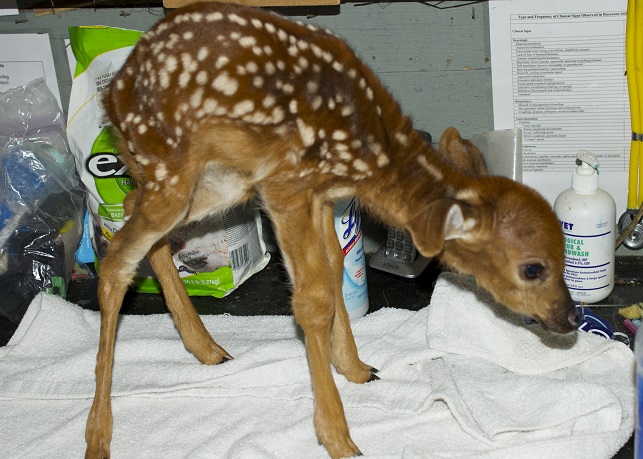Wildlife experts say “fawn-napping” is becoming an increasing and concerning problem.

The term comes from when healthy fawns are removed or taken, because a person mistakenly believes they are rescuing a fawn that has been abandoned.
Fawns are born relatively scentless, and when they are young they cannot keep up with their mothers, who spend hours foraging for food. So a doe will leave her fawn behind, on purpose, usually in tall grass, where it is safe and somewhat hidden.
“So she tells them ‘lay here in the tall grass a predator can’t find you because you don’t smell like anything and I will come back,’” Angela Fontana, with Critter Care Wildlife Society in Langley, B.C., told Global News.
Problem is when the doe returns, some are finding her fawn is gone, taken by a human, and the number is increasing according to Chantal Theijn, an authorized wildlife custodian with Hobbitstee Wildlife Refuge.
“The call volume on fawns is up significantly from past years,” Theijn told Global News. “There seems to be a lot of incidences where people take fawns from the wild. They stumble across the fawn (as) they’re hiking or something of that nature, or they find one in their backyard,” Theijn said.
They think the fawn has been abandoned or orphaned so they take it home.

“They think it needs help, so they’ll bring it in their home, go online, find a website that explains to them how to care for a fawn, go out to the grocery store and purchase what they think they need to purchase, and they try to get these fawns to live,” said Theijn.
It can be detrimental for the fawns. Theijn cared for a fawn that was taken into a person’s home for two weeks, by the time it arrived at Theijn’s wildlife refuge in Jarvis, Ont., it was emaciated, dehydrated and in kidney failure, with no chance of survival. It had to be euthanized.
“They’ve ruined their lives, definitely, yes.”
For the fawns that survive, the experience of living in a human home for an extended period can fundamentally change them. Problems range from infection and illness to no longer fearing humans or dogs (which can look like a coyote, a deer predator).
“I have encountered fawns that have been in people’s homes for extended periods of time. They’ve actually completely forgotten they’re deer,” said Theijn.

WATCH: Chantal Theijn, from Hobbitstee Wildlife Refuge, explains why fawns are left for extended periods of time by their mothers, and what fawn-napping is.
The wildlife rehabilitation centres try to reunite doe and fawn whenever possible. Mother deer will look for their babies for days, and sometimes have been heard crying when a baby is missing. If reunification is not possible, they work to rehabilitate fawns with the hope that one day they can be released back into the wild.
Fawns and selfies
Another issue – selfies. That desire to touch and hold a cute fawn for a photo may be damaging.
“It’s very stressful for a wild animal,” Fontana told Global News. “Especially when you are looking at fawns, depending on the age, they actually can die of stress.”
And it’s also illegal to keep wildlife in captivity or harass wildlife; in Ontario, for example, it could carry a fine up to $25,000 or jail time, or both.
- Ontario First Nation declares state of emergency amid skyrocketing benzene levels
- ‘Sciatica was gone’: hospital performs robot-assisted spinal surgery in Canadian first
- Do Canadians have an appetite for electric vehicles? Experts are divided
- TikTok vows to sue over potential U.S. ban. What’s the legal outlook?
“Our conservation officers do take it seriously and will lay charges,” Jolanta Kowalski with Ontario’s Ministry of Natural Resources and Forestry told Global News. “Only authorized people can do that, wildlife rehabilitation facilities, they have the training and skills to give the treatment to these animals that the average person just doesn’t.”
And space is limited in those facilities.
“There’s very few spaces, and I am adamant. I want my spaces to be held for fawns that are truly orphaned, that are injured or sick,” said Theijn.
So experts say, if you see a fawn that is injured call an authorized wildlife rehabilitator or a local SPCA and do not feed it.
“People have good intentions but you can definitely kill an animal with kindness,” Fontana told Global News.




Comments